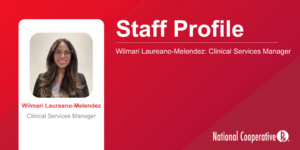National CooperativeRx constantly monitors the pharmaceutical pipeline. As treatment options change, it’s important to know which drugs bring the highest value. Our quarterly NCRx Pipeline Reports provide insight from our clinical team on what changes you can expect to see on the market and how they impact plan performance.
Mayzent: Mayzent is the first treatment specifically approved for patients with active secondary progressive multiple sclerosis (SPMS), relapsing-remitting multiple sclerosis (RRMS) and clinically isolated syndrome. 85-90% of patients are diagnosed with relapsing-remitting multiple sclerosis (RRMS), but 90% of patients develop SPMS within 25 years of diagnosis. Patients who may benefit the most are those who are shifting toward SPMS or are already in the early stages when disease is most active. In one trial, the drug slowed disability in SPMS patients by 33% over a placebo.1 The drug also showed improvement in cognitive-processing speed and reduction in relapses and number of active brain lesions.
The Institute for Clinical and Economic Review (ICER) released a statement that it found Mayzent no better than Gilenya, Novartis’ blockbuster multiple sclerosis (MS) treatment. ICER recommends payers grant preferred formulary status to the generic version of Gilenya, which will be available before Mayzent.
Anticipated Launch: The US Food and Drug Administration (FDA) approved Mayzent in March 2019 and expected launch will likely be third quarter of 2019.
Price: ICER found the list price of $88,500 excessive. It instead suggests a price of $31,996 to achieve a quality-adjusted life year (QALY) of 150,000.2
Impact: Low to moderate. Approximately one million people in the US suffer from MS, and 0.04% of them have SPMS, who would primarily benefit from treatment. 3
Vascepa: Vascepa self-advertises as the only FDA-approved prescription containing eicosapentaenoic acid used to treat high triglycerides. Similar to fish oil, it’s purified to contain no docosahexaenoic acid, which is known to raise levels of “bad” cholesterol. Triglycerides are one type of fat found in the body and high levels, known as hypertriglyceridemia, have been associated with a higher risk of cardiovascular (CV) disease. Some causes of hypertriglyceridemia are obesity, type 2 diabetes, alcoholism and HIV. Amarin corporation recently asked the FDA to expand Vascepa’s label by adding an indication to reduce CV risk in people with persistently elevated triglycerides (when a drug and lifestyle changes aren’t enough). The request was based off a trial which showed a 25% relative risk reduction in events like stroke or heart attack over a 5-year period.4 The lowering of triglycerides doesn’t seem to be the only factor driving the reduction in CV events, leaving experts to guess exactly how the drug works. Nonetheless, the data has generated an increase of 76.8% in new prescriptions for the drug this past year. Other current treatments for hypertriglyceridemia include fenofibrate, gemfibrozil and omega 3 capsules (generic Lovaza®).
Anticipated Launch: The FDA has placed Vascepa under priority review, with a decision deadline set for September 30, 2019. Expected launch would be soon after.
Price: Approximately $300 for one-month supply.
Impact: Moderate to high. Data suggests 42% of Americans have elevated triglycerides, with higher prevalence in Hispanic Americans/Asian Americans and lower rates in African Americans.5
Upadacitinib: Upadacitinib is a new product from AbbVie that aims to treat adult patients with moderate to severe rheumatoid arthritis. The product would join Jakafi®, Xeljanz® and Olumiant® in a drug class known as Janus Kinase inhibitors. The landmark trial submitted to the FDA showed 68% of patients taking 15 mg of upadacitinib saw at least a 20% improvement in symptoms compared to 41% for methotrexate.6 In a secondary endpoint, 23% of patients saw at least a 70% improvement in symptoms versus 3% for methotrexate. Even more notable, upadacitinib was found to be superior to Humira®, a popular staple for rheumatoid arthritis treatment, in a phase 3 trial.7 Additional indications currently being studied include ulcerative colitis, psoriasis, atopic dermatitis, ankylosing spondylitis and Crohn’s disease.
Anticipated Launch: Upatacitinib is currently under review by the FDA with a decision expected this fall.
Price: Currently unknown.
Impact: 1.3 million people suffer from rheumatoid arthritis in the United States.8
Oral semaglutide: Oral semaglutide, a Novo Nordisk product, is the first oral form of a glucagon-like peptide-1 receptor agonist (GLP-1) developed to treat type 2 diabetes. GLP-1s are generally considered a second-line treatment for diabetes, along with other classes of anti-diabetic drugs. Several clinical trials, dubbed the “PIONEER” trials, have highlighted the benefit of oral semaglutide on lowering blood sugar and risk of heart disease. In one trial, oral semaglutide produced a similar reduction in average blood sugar over three months and more weight loss compared to Victoza®, an injectable GLP-1.9 In a second trial, oral semaglutide demonstrated superiority in blood sugar control and weight loss when compared to Januvia®.10 One key aspect of oral semaglutide is that it must be taken on an empty stomach 30 minutes before a meal, while the injectables are dosed daily or weekly regardless of meals or time of day. GLP-1s commonly have a side effect of nausea and some carry a risk of thyroid tumors, which may cause more side effects if there’s co-existing kidney disease.
Anticipated Launch: Oral semaglutide is currently under review by the FDA, with expected approval September 2019.
Price: Currently unknown, yet Novo Nordisk’s Chief Medical Officer stated, “We definitely want to make sure access is not a barrier.”
Impact: Semaglutide is currently available in injectable formulation known as Ozempic®, but there are no oral GLP-1 options at this time.
Sunosi® (Solriamfetol): Sonosi®, Jazz Pharmaceutical’s newest sleep drug, aims to improve wakefulness in adult patients with excessive daytime sleepiness associated with narcolepsy or obstructive sleep apnea (OSA). This is a broader label than the drugmaker’s other sleep drug Xyrem®, which is only intended for patients with narcolepsy. In its phase 3 trial, 70.7% of patients with OSA who took the 150 mg dose of Sunosi® were able to achieve daytime sleepiness scores on the Epworth Sleepiness Scale (ESS), equal to adults without a sleep disorder, versus 37.7% for placebo.11 A study done in patients with narcolepsy showed an improvement of around 5.4 points on the ESS, which was significant when compared to placebo, but did not reach the “normal” range.12 In a comparison, which must be done with caution due to differences in study design and patient population, Xyrem® improved around 5 points on the ESS during its clinical trials.13 Headache, nausea, reduced appetite, anxiety and irritation or infection in the upper airways were the most common side effects of Sunosi® and occurred more often than in placebo-treated patients. The Drug Enforcement Agency has given the product a schedule IV (C-IV) controlled substance designation.
Anticipated Launch: Sunosi® is expected to launch early July 2019.
Price: Currently unknown. A wider label could mean a lower list price (compared to Xyrem’s® monthly average price of up to $16,000), but the expanded target patient population for this drug may ultimately mean higher spend for payers for this drug class.
Impact: High, since the indication includes OSA. An estimated 22 million Americans suffer from some form of sleep apnea.14
- Kappos L, Bar-Or A, Cree BAC, et al. Siponimod versus placebo in secondary progressive multiple sclerosis (EXPAND): a double-blind, randomized, phase 3 study. Lancet 2018; 391(10127): 1263-73.
- Sharaf RN, Synnott P, Chapman R, et al. Siponimod for the treatment of secondary progressive multiple sclerosis: effectiveness and value. Institute for clinical and economic review. https://icer-review.org/wp-content/uploads/2018/10/ICER_MS_Evidence_Report_050219.pdf Published May 2019. Accessed June 11, 2019
- https://www.nationalmssociety.org/What-is-MS/MS-FAQ-s
- Bhatt DL, Steg PG, Miller M, et al. Cardiovascular risk reduction with icosapent ethyl for hypertriglyceridemia. N Engl J Med 2019; 380: 11-22.
- Karanchi H, Wyne K. StatPearls January 2019.
- https://www.thelancet.com/journals/lancet/article/PIIS0140-6736(19)30419-2/fulltext
- Fleischmann R, Pangan AL, Mysler E, et al. A Phase 3, Randomized, Double-Blind Study Comparing Upadacitinib to Placebo and to Adalimumab, in Patients with Active Rheumatoid Arthritis with Inadequate Response to Methotrexate [abstract]. Arthritis Rheumatol. 2018; 70 (suppl 10).
- Helmick CG, Felson DT, Lawrence RC, et al. Estimates of the prevalence of arthritis and other rheumatic conditions in the United States. Arthritis and Rheum 2008; 58(1): 15–25
- Pratley R, Amod A, Tetens Hoff S, et al. Oral semaglutide versus subcutaneous liraglutide and placebo in type 2 diabetes (PIONEER 4): a randomized, double-blind, phase 3a trial. Lancet 2019; (published online June 8, 2019).
- Pieber TR, Bode B, Mertens A, et al. Efficacy and safety of oral semaglutide with flexible dose adjustment versus sitagliptin in type 2 diabetes (PIONEER 7): a multicenter, open-label, randomized, phase 3a trial. Lancet 2019; (published online June 9, 2019).
- Schweitzer PK, Rosenberg R, Zammit GK, et al. Solriamfetol for excessive sleepiness in obstructive sleep apnea (TONES 3). Am J Respir Crit Care Med 2019; 199(11): 1421–1431.
- Thorpy MJ, Shapiro C, Mayer G, et al. A randomized study of solriamfetol for excessive sleepiness in narcolepsy. Ann Neruol 2019; 85(3):359-370.
- Xyrem International Study Group. A double-blind, placebo-controlled study demonstrates sodium oxybate is effective for the treatment of excessive daytime sleepiness in narcolepsy. J Clin Sleep Med 2005 Oct 15;1(4):391-7.
- https://www.sleepapnea.org/learn/sleep-apnea-information-clinicians/




